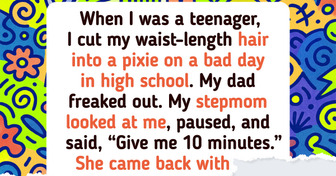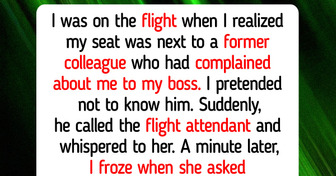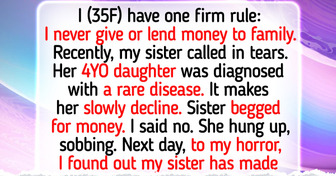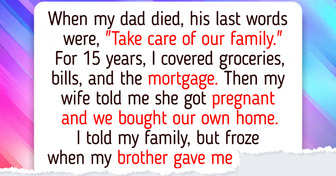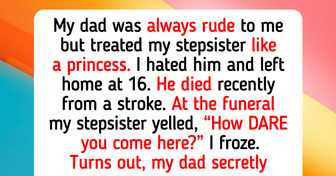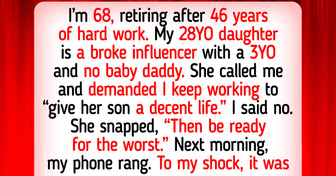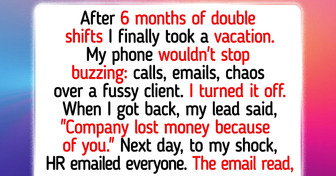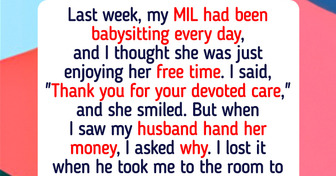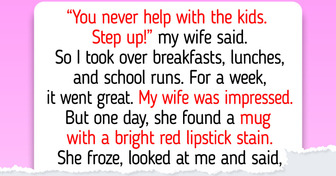Pierce Brosnan Debuts New Look With Bald Head and He’s Unrecognizable

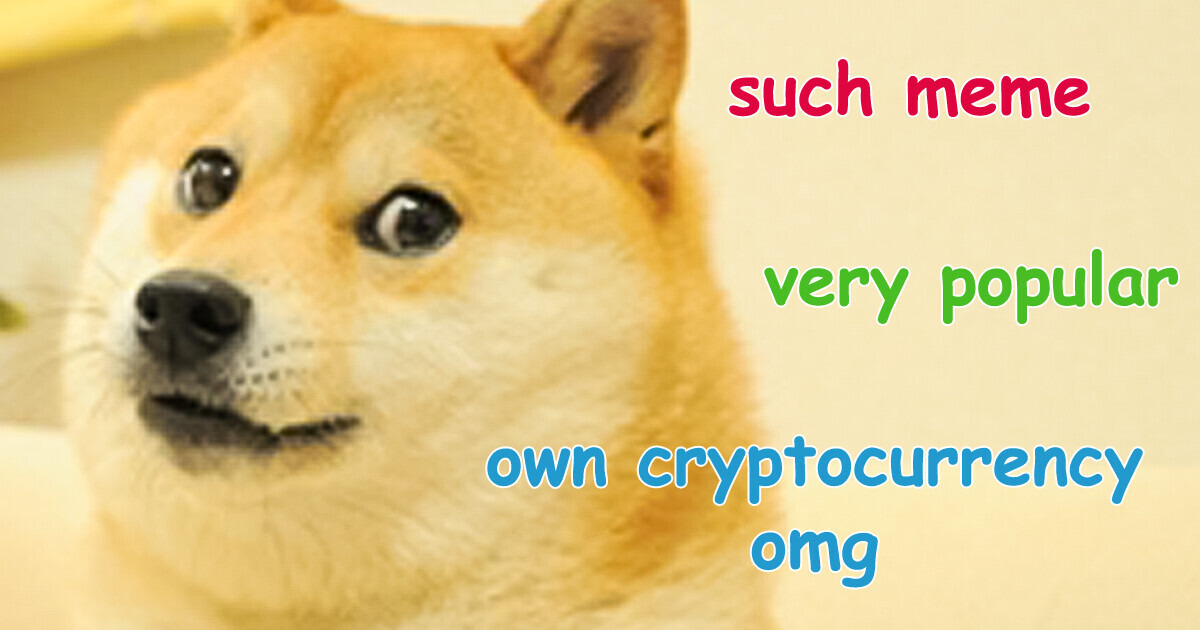
Memes have been around the Internet for a long time. And many of us have witnessed different generations and variations of this Internet humor! We found it very interesting to find out their origins and dug deep into the virtual history. From the most famous Trollface to Doge, let’s get to know where the meme faces come from!
The Troll Face, also known as Trollface, is one of the most iconic meme faces there is! It is a popular meme featuring a character with a sly grin, often used to represent Internet trolls and their mischievous actions. It stands out as one of the earliest and most recognizable faces in the world of rage comics.
Created by Carlos Ramirez, a college student from Oakland, Trollface came to life on September 19, 2008, through the simple tools of Microsoft Paint. Ramirez, just 18 at the time, shared his creation on his DeviantArt page, “Whynne,” as part of a rage comic titled Trolls, exploring the seemingly pointless world of trolling.
The image gained initial traction on the imageboard site 4chan after Ramirez posted it there. Users quickly embraced Trollface as the universal symbol of an Internet troll and a versatile character for rage comics. Its popularity skyrocketed, spreading beyond 4chan to platforms like Reddit and Urban Dictionary in 2009, eventually making its way to other image-sharing sites like Imgur and Facebook.
In an interesting turn of events in March 2021, Ramirez announced plans to sell a non-fungible token (NFT) featuring Trollface, adding a modern twist to its legacy.
Trollface’s significance in the Internet culture is evident, with La Tercera dubbing it “the father of memes.” The meme has even been commemorated with a bust displayed at the Museo del Meme in Mexico City, solidifying its place in the meme hall of fame.
Doge, pronounced as [DOHJ], is a term commonly used as slang for “dog,” particularly associated with images of Shiba Inus, affectionately called “Shibes.” The central figure of this phenomenon is Kabosu, a Shiba Inu whose owner, Atsuko Sato, captured viral photos in the early months of 2010. These images unleashed a wave of Internet memes and set the stage for broader trends in the years that followed.
The hallmark of the Doge meme is a picture of a Shiba Inu, often Kabosu, accompanied by colorful text in the Comic Sans font in the foreground. This text represents an internal monologue intentionally written in the form of broken English. While Kabosu is the most frequently featured Shiba Inu, variations with other Shiba Inus have also gained popularity.
The genesis of the Doge phenomenon can be traced back to February 13, 2010, when Atsuko Sato, a Japanese kindergarten teacher, shared several photos of her adopted Shiba Inu, Kabosu, on her personal blog. One particular snapshot of Kabosu sitting on a couch, casting a sidelong glare with raised eyebrows, became an iconic representation of the meme.
Interest in the Doge meme surged online around July 2013. Furthermore, December 2013 marked the introduction of Dogecoin, a novel cryptocurrency and the first of its kind.
The term “Doge” made its way into Dictionary.com in November 2015, expanding its definition beyond the image macro and its variations to encompass the unique form of “language” it employs. Media publications recognized Doge as a defining meme of Internet culture in the 2010s, attributing its influence to subsequent online developments like DoggoLingo and WeRateDogs. The impact of Doge extended beyond its initial meme status, leaving an indelible mark on the evolving landscape of Internet expression and humor.
Derp, often associated with a sense of foolishness, is an expression akin to earlier interjections like “duh” and “dur.” In image macros, the individual is typically depicted with eyes looking in opposite directions, accompanied by the caption “DERP.”
The origin of the term “derp” can be traced back to the 1998 comedy film Baseketball, created by Trey Parker and Matt Stone of South Park fame. In a memorable scene involving the inappropriate smell of underwear, Matt exclaims “Derp” as he hastily exits.
On the Internet hub 4chan, the influence of “derp” burgeoned through the use of captioned image macros. Over time, it transformed into a versatile placeholder in textual form. Initially, the concept was simple—a fitting image paired with the caption “derp.” However, it quickly evolved into clever wordplays, incorporating the names of celebrities depicted in the macros.
In the realm of rage comics, “herp” and “derp” find common usage as placeholders for names or topics that are non-essential to the story or joke. A rage character named Herp Derp serves as a representation of stupidity or ignorance.
The evolution of “derp” reflects its adaptability and resonance in Internet culture, becoming more than just an expression of foolishness. It has evolved into a versatile tool for humor and commentary, contributing to the ever-changing landscape of online expression and memes. The playful and adaptable nature of “derp” ensures its continued presence in the digital lexicon, embodying a form of Internet language that transcends its simple origins.
The “Y U NO” Guy, known for its use of SMS shorthands and casual grammar, has become an image macro series that playfully directs attention to specific subjects or issues. The stick-figure character wears a distinctive facial expression believed to be inspired by the Japanese sci-fi manga and anime series Gantz.
The inception of the “Y U NO” phrasal template occurred on LOLTumblrWallpapers, where it was first posted and gained significant traction with over 10,000 reblogs and likes on Tumblr. In this initial instance, the image macro featured a beige/light brownish background, showcasing the Gantz character at the center, with the caption, “I TXT U, Y U NO TXT BAK!?”
In a matter of weeks, the macro series proliferated on platforms like Tumblr and Meme Generator, accumulating a substantial collection, both in image and text form without the distinct facial expression. The trend extended its reach to platforms like FunnyJunk and various culture-related blogs.
The charm of “Y U NO” lies in its simplicity, using relatable language and a humorous tone to address everyday situations. The stick-figure’s expressive face, borrowed from the Gantz series, adds a playful touch to the meme’s overall appeal.
The collaborative nature of online communities has played a significant role in the meme’s dissemination, with users contributing their own variations and adaptations. This collaborative spirit has fueled the meme’s popularity, ensuring its presence across diverse platforms and cultural blogs.
The “Y U NO” Guy has found its place in the ever-evolving landscape of Internet humor, serving as a lighthearted and relatable way for users to express frustrations or observations in a language that resonates with the casual and informal nature of online communication.
Another extremely well-known character of the meme faces—Rageguy, the central character of a series of simple and roughly drawn comics, is well-known for expressing rage and exasperation. These comics typically consist of four panes, showcasing situations that can trigger intense frustration, with the main character passionately screaming in anger. Over time, this character has evolved, giving rise to a broader comic series known as Rage Comics.
The origins of Rageguy can be traced back to 2008 on the 4chan /b/ imageboard. The first depiction was a basic 4-pane comic created using MS Paint, illustrating the common experience of “toilet splashback.” The initial three panes detailed the incident, and in the fourth pane, Rageguy made his debut, screaming in frustration, accompanied by the caption in bold red letters on the right side of his face.
The simplicity and versatility of Rageguy contributed to its popularity, leading to the development of an entire comic series known as Rage Comics. These comics often serve as a humorous way for individuals to vent about relatable everyday frustrations.
In December 2010, the technology blog Mashable hosted a contest to determine the best Internet meme of the year. Rageguy earned a spot on the list of “5 Internet Meme Finalists,” standing alongside other notable memes like Sad Keanu, Double Rainbow, and Bed Intruder (the eventual winner).
Rage Comics have become a staple in Internet culture, providing a platform for users to share their comical and rage-filled experiences in a visually engaging format. The adaptability and relatability of Rageguy continue to resonate with online communities, ensuring its enduring presence in the ever-evolving world of Internet humor.
Me Gusta, a face from the world of Rage Comics, is commonly used to express approval in awkward or unconventional situations. The phrase “me gusta” translates to “I like it” in Spanish. Initially, it conveyed a peculiar sense of pleasure in sexually suggestive contexts, but over time, its meaning expanded to encompass a broader range, describing a state of being simultaneously disturbed and pleased.
The adoption of the colloquial Spanish phrase “me gusta” into a Rage Comic drawing occurred when illustrator May Oswald (formerly known as Matt) shared her artwork on 4chan and Reddit on March 18th, 2010. Her creation marked the birth of the Me Gusta meme within the online community.
In an interview conducted on May 6th, 2021, Oswald disclosed that the original post on 4chan was a strategic effort to propel the meme to go viral. She achieved this by sharing examples of the Me Gusta face in various memes from different accounts and IP addresses.
“Here was the plan. Oftentimes, when a new Rage Face was coming out in 4chan at that time, how the thread would happen is that there would just be the face, and then with the colorful language of 4chan, there would be the equivalent of, ‘Hey, new Rage Face just dropped. See what you guys can make of it.’ So my intention was to do the exact same thing, ‘Hey, new Rage Face just dropped.’ Post the image. But what I came in with was that I had made about two or three example comics to kind of get it out there with sort of what I was intending this face to be used for,” she explained.
Me Gusta’s popularity stems from its ability to encapsulate the mixed emotions people experience in peculiar situations. The face, with its distinctive expression, has become a widely recognizable symbol of both discomfort and approval in the realm of Internet humor.
Oswald’s intentional efforts to make the Me Gusta meme go viral highlight the collaborative and participatory nature of Internet culture. This meme’s journey from a carefully constructed post on 4chan to becoming a ubiquitous symbol of mixed feelings showcases the dynamic evolution of online expressions. Me Gusta continues to resonate with users, serving as a versatile and relatable way to convey complex emotions in a humorous and concise manner.
Forever Alone, a character originating from rage comics, serves as an exploitable expression of loneliness and disappointment in life. This face has not only been utilized as an advice animal but has also inspired the creation of the snowclone template “Forever an X.”
Emerging as one of the earliest significant spin-off characters from the original Rage Guy on 4chan in 2009, Forever Alone gained prominence. The first known instance was posted on May 28th, 2010, by FunnyJunk user Azuul in a thread titled “April Fools.” While the original artist remains unconfirmed, various sources point to Dominic Vanner as the illustrator behind the character, as noted by Dictionary.com.
In early June 2010, another instance featuring a bachelor salaryman surfaced on 4chan. On August 5th, 2010, a Forever Alone rage comic gained popularity on Reddit, receiving over 275 upvotes and 70 comments.
The meme’s prevalence expanded rapidly, with over 23,000 image results on FunnyJunk and 50,000 on Tumblr by September 2010. Recognizing its growing influence, the Forever Alone Comics blog was launched on September 11th to curate the increasing collection of four-pane comics. Around the same time, the /r/foreveralone subreddit was established, garnering over 25,300 subscribers in the subsequent three years. Early October witnessed mentions of Forever Alone in various blogs, including Geekosystem, Memebase, and Uproxx.
As the term “Forever Alone” evolved, it transcended its rage comic roots, becoming a broader statement about solitude. By February 13th, 2013, the International Business Times published a slideshow featuring notable Valentine’s Day Forever Alone comics and image macros. Reflecting its enduring popularity, a Facebook page titled “Forever Alone” amassed over 7.2 million submissions by February 2013.
Forever Alone’s journey from a niche rage comic character to a symbol resonating with a broader audience reflects the dynamic nature of Internet culture and the adaptability of online expressions in conveying complex emotions and experiences.
Which of the meme faces was your favorite? Would you like to read more about the history of our favorite childhood sensations? Let’s dive into this in our next article!


